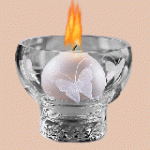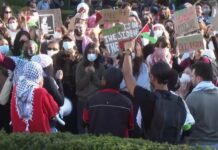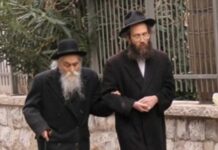 Yahrtzeits – 12 Kislev
Yahrtzeits – 12 Kislev
Ravina II Bar Shmuel (c. 475), who completed the codification of the Talmud Bavli begun earlier by Rav Ashi. His petirah marks the end of the period of Amoraim.
Rav Shlomo Luria Ashkenazi, the Maharshal (1510-1574) of Lublin; author of the Yam Shel Shlomo, a halachic commentary on 16 tractates of the Talmud (only 7 of which are still extant). His Chochmas Shlomo, glosses on the text of the Talmud and comments, is printed in the standard editions of the Talmud.
Rav Yitzchak Lampronti (1679-1756), author of Pachad Yitzchak, the first major Talmudic encyclopedia ever assembled. He was also moreh tzedek in Ferera, Italy, and the teacher of the Ramchal.
Rav Avraham Dov Auerbach of Avritch and Tzefas (1765-1840). He was a disciple of Rav Levi Yitzchak of Berdichev and the first two Rebbes of Chernobyl. Rebbe of Avritch from 1785, he moved to Tzefas in 1830 at the age of 65. He is the author of Bas Ayin, a commentary on Chumash. In the deadly earthquake of 24 Tevet 5597 (January 1, 1837), 5,000 people lost their lives, of whom 4,000 were Jews. Although most of the shul of the Avritcher Rebbe collapsed, the part where the men were clustered remained upright and everyone was saved. He is buried in the old cemetery of Tzefas.
Rav Yehoshua Moshe Aharonson of Petach Tikva (1910-1993). Born in Warsaw, he was was named rabbi of Sanok in 1937. In the winter of early 1940, he was appointed to the Beis Din of Warsaw. In March 1942, he was deported to the Konin labor camp, near Chelmno. The Konin camp was liquidated in the summer of 1943. Rabbi Aharonson was taken to Hohensalza, and afterwards to Auschwitz 3 (Buna). In 1945 he was transferred from Auschwitz to Buchenwald and then taken on a death march to Theresienstadt, where he was liberated. He subsequently moved to Eretz Israel, where he served as a rabbi in Petach Tikva and Emmanuel. His writings were collected in the book Alei Merorot.
Today in History – 12 Kislev
· Mohamed Ibn Farouk, the governor of Yerushalayim, was deposed, 1626. Sadly, his successors were not much friendlier to the local Jews than he.
· Shabsai Tzvi’s primary public relations figure, Nathan of Gaza, who had not followed his master into Islam, was excommunicated by the rabbinical council in Constantinople, 1666.
· Rav Avraham Dov Avritsh, author of Bas Ayin, among the last of those to perish in a plague in Tzefas which ended shortly after his passing, 1841.
Yahrtzeits – 13 Kislev
Ravina berei D’rav Huna (499 or 421 CE). Rosh Metivta of Sura. He, together with his teacher, Rav Ashi, collected and commented upon the Gemara of what would henceforth be known as the Talmud Bavli.
Rav Azariah min Ha’adumim, author of Meor Einayim (1577).
Rav Shlomo Zalman Yosef of Vyelpol (1857).
Rav Dov Ber of Levo, son on Rav Yisrael of Ruzhin (1875).
Rav Yisrael Aryeh of Premishlan (1890).
Rav Dov Ber Livshitz, Rav of Sardnik (1900)
Rav Yisrael Taub of Modzhitz, author of Divrei Yisrael (1849-1920). He was the son of Rav Shmuel Eliyahu Taub of Zvolin (1888) and the grandson of Rav Yechezkel Taub of Kuzmir (1856), who was one of the students of the Chozeh of Lublin. He became the first Rebbe of Modzhitz and was succeeded by his son, Shaul Yedidya Elazer. Legend has it that in 1913 Taub composed a 30-minute negun while having his leg amputated without anesthesia.
Rav Yisrael Friedman, the second Tchortkover Rebbe (1934, 1933, or 1932)
Rav Yechiel Michel Hager of Horodenka (1941). One of the sons of Rav Baruch of Vizhnitz (the Imrei Baruch), he was appointed Rebbe (as were his brothers) after his father’s petira on 20 Kislev 1892. Rav Yechiel Michel moved to Horodenka, to succeed his brother, Rav Shmuel Abba, who passed away childless in 1895. He married the daughter of his older brother, Rav Chaim (Rebbe in Antiniya). During World War I, he escaped to Chernowitz and served as Rebbe to the many Vizhnitz Chassidim there. He had one son, Baruch, who was later appointed Dayan in Chernowitz. After Sukkos of 1941, he was among 5000 Jews who were deported to Transnistria, and area in southwestern Ukraine, between the Dniester River (“Nistru” in Romanian) and the Bug River, north of the Black Sea. Also on that transport was Rav Aharon of Boyan, who came down with typhus and was niftar on 13 or 14 Cheshvan. Both Rav Yechiel Michel and his son Baruch came down with typhus in the work camp in Warchovka and died there.
Rav Shalom Hadayah of Aram Tzova (1864-1944). A descendent of Rav Saadyah Gaon, Reb Shalom’s father passed away when he was only three. At the age of 20, he married Sarah, the daughter of Rav Yitzchak Labaton. When Rav Yitzchak moved to Eretz Yisrael in 1888, he took Rav Shalom and his family with him. In 1891, Rav Shalom had to return to Aram Tzova. While there, he was stricken with an eye ailment and nearly lost his eyesight. Despite that, he wrote a sefer, Shalom LaAm, which focuses on the issues of doing tzedakah and chessed, particularly on behalf of Torah students and scholars. In 1896, Rav Shalom moved to Eretz Yisrael permanently, first settling in the Bucharian Quarter, then moving to the Ohel Moshe neighborhood. In 1904, Rav Shalom was appointed moreh tzedek in the beis din of Rav Vidal Anjel and Rav Baruch Elnekavah. In 1930, he was appointed Rosh Av Beis Din of all the Sephardic communities in Yerushalayim. In 1927, Yerushalayim’s chief kabbalist, and rosh yeshivah of Bais Keil, Rav Mas’ud HaKohen Elchaded, passed away and Rav Shalom was appointed his successor. Besides Shalom LaAm, the other sefarim Rav Shalom wrote were: Dover Shalom, responsa on the Arba Turim; HaChaim v’HaShalom, a series of Torah extrapolations; and Shalom v’Tzedek. His son, Rav Ovadyah, was a prominent Rosh Mesivta in the Porat Yosef yeshiva. When the Jordanians conquered the Old City, Yeshivas Bais Keil was destroyed and Rav Ovadyah reestablished it in his own home in the new city. After the Six-Day War, he reestablished the yeshiva in the Old City.
Today in History – 13 Kislev
· Mass murder of Jews of Mogilev, 1761.
· As Allied troops neared, the Germans tried to cover up their actions by killing the surviving inmates of the labor camp and destroying the camp itself in Tarasika, Romania, 1943.
· First chassidic town in the U.S., New Square, elects its first mayor, 1961.
{Anshe.org/Matzav.com Newscenter}











